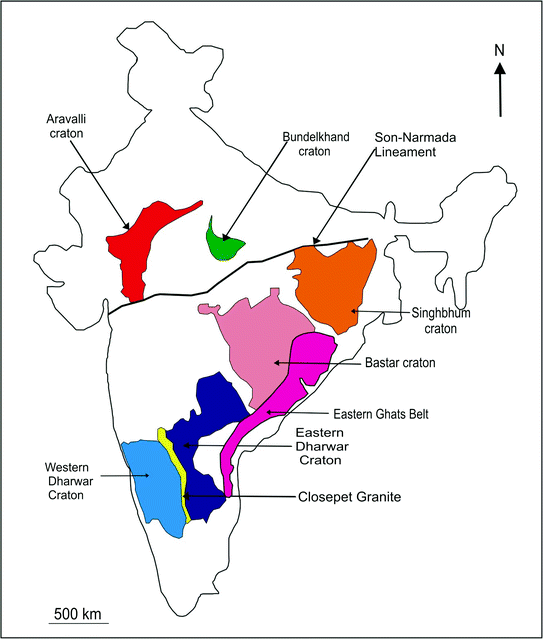Singhbhum Craton & Age of Emergence of Continents
- 10 Nov 2021
Earth's first continents emerged from the oceans around 3.3–3.2 billion years ago — at least 700 million years earlier than previously thought, according to a study by researchers from Monash University, Australia.
- They studied the sedimentary and igneous rocks of an ancient continental fragment in India called the Singhbhum Craton in today’s Eastern India.

Zircon Dating
- The researchers dated the age of each of the sandstones by studying microscopic grains of a mineral called zircon, which naturally contains tiny amounts of uranium that slowly decay into lead over geological periods of time.
- By measuring the ratio of lead to uranium, it is possible to determine how long ago the zircon crystals formed.
- The team's uranium–lead dating indicated that the ancient sandstones in the Singhbhum Craton were deposited around 3 billion years ago, making them some of the oldest-known beach deposits in the world.
How the Land Mass emerged from the Ocean
- A unique feature of continents is their thick, buoyant crust, which allows them to float on top of Earth's mantle.
- By around 3.2 billion years ago, according to researchers, the buoyant crust would have become thick enough to emerge from the oceans, forming one of the earliest landmasses.
- Most ancient continents — the Singhbhum Craton included — are built up of granite, formed from the melting of pre-existing rocks at the base of the crust.
- Analysis of the granitoids from the craton revealed a transition from predominantly sodium to a more potassium-based geochemistry in the period from around 3.53 to 3.1 billion years ago, indicating a progressive maturation of the crust.
- Furthermore, the rocks become increasingly depleted in heavy rare earth elements and yttrium, which the team explain indicates that the granites were forming at greater pressures — more than tripling in the period from 3.5–3.25 billion years ago.
- With these rocks forming at the bottom of the continental crust, this indicates an increase in the thickness of the Singhbhum Craton from around 20 to 28 miles over the same time-span.
- By around 3 billion years ago, the continental crust of the Singhbhum Craton had grown to be about 50 kilometres [31 miles] thick, making it buoyant enough to begin rising above sea level,' the researchers explained.
| Scientists believe that:
|
Other Findings
- Sedimentary rocks of roughly this age are also present in the oldest cratons of Australia (the Pilbara and Yilgarn cratons) and South Africa (the Kaapvaal Craton).
| Cratons
|




